There Is a Woman in Every Color Exhibition Arrives March 16, Final Stop of National Tour
The Delaware Art Museum presents “There Is a Woman in Every Color: Black Women in Art,” opening on Saturday, March 16, 2024, and running through Sunday, May 26, 2024. Admission for the exhibition, featured in the Fusco Gallery, is included in Museum admission.
“There is a Woman in Every Color” examines the representation of Black women in the United States over the past two centuries and makes visible the presence of Black women in American art history.
This major traveling exhibition features more than 40 works of art from the collection of the Bowdoin College Museum of Art (BMCA), to which the Delaware Art Museum has added objects from its collection. Curated by Elizabeth S. Humphrey (Ph.D. candidate at the University of Delaware and Bowdoin Class of 2014), “There Is a Woman in Every Color” opened at the BCMA in 2021 and is touring with support from the Art Bridges Foundation, which is dedicated to expanding access to American art across the country.
The traveling exhibition includes works by important 20th– and 21st-century artists Emma Amos, Elizabeth Catlett (whose 1975 work inspired the exhibition’s name), Alma Thomas, Carrie Mae Weems, Betye Saar, Faith Ringgold, Barbara Chase-Riboud, Kara Walker, Mickalene Thomas, LaToya Ruby Frazier, and Nyeema Morgan. These recent works are joined by a selection of 19th-century works of art—including a photograph of Sojourner Truth and a marble bust by Edmonia Lewis—that highlight the continuity of experiences of Black women in America.
Humphrey says, “I hope that this exhibition will encourage audiences to engage with artists often overlooked in the canon of American art, providing space for their works to stand on the equal footing they so deserve.”
In Delaware, the works from Bowdoin will be shown alongside paintings, sculptures, prints, photographs, and a quilt from DelArt’s collection, featuring artists such as Joyce Scott, Sonya Clark, Edward Loper Sr., and Deborah Willis. The added objects, dating from the 1940s through 2021, bring the total object count to 60.
DelArt’s Curator of American Art, Heather Campbell Coyle explains, “It’s thrilling to see works from our collection juxtaposed with Bowdoin’s wonderful examples. Elizabeth Humphrey has brought a fresh perspective to the interpretation of the Museum’s collection.”
Humphrey designed this exhibition to present dialogues between generations of Black women: “Curating ’There Is a Woman in Every Color’ provided an opportunity to place art by Black women in conversation with one another and showcase their exploration of personhood, issues of identity, and resistance to certain modes of representation or classification. Presenting this exhibition at the Delaware Art Museum and including works from its collection allowed me to revisit and reimagine the show. Placing two museum collections in conversation with one another revealed exciting connections and narratives that were not as prominent before. Delaware viewers will view artworks familiar to them alongside those from the BCMA, and I look forward to seeing what connections and stories resonate.”
“There Is a Woman in Every Color” is organized thematically. The exhibition opens with representations of individual Black women, including portraits and nudes produced by photographers and printmakers, such as Elizabeth Catlett, William Witt and Mickalene Thomas. The second section focuses on issues of labor and resources, including powerful photographs of Black women in service to white families, as well as famous figures like Black activist Fannie Lou Hamer. Other sections focus on documentary photography, meditations on femininity, and contemporary artists intervening in historical narratives. The final section engages with Black women pushing the boundaries of artistic expression and the expectations of the art world.
Related Commission by Artist Shakira Hunt
Programming in support of the exhibition includes a commissioned installation by multimedia artist and Delaware native, Shakira Hunt, who will also coordinate a series of art events.
A direct response to the themes of the exhibition, Hunt’s art will be installed in the Orientation Hallway this spring and will continue past the exhibition’s closing. It will be an extension of her “Give Me My Flowers” and “Soft Petals” series, which explore themes of gender and femininity, particularly mother-daughter relationships and the intergenerational wounds (“mother wounds”) that pass between women.
Recognizing others, like herself, who haven’t historically felt seen or accepted in fine art institutions, Hunt says, “I always want access to be given to the folks that don’t really get to see themselves in spaces like this, who have not been exposed to institutions like this, who have never felt empowered.”
University Night Lecture with Artist Sonya Clark
The April 25 University Night, in partnership with the University of Delaware, will feature a talk by artist Sonya Clark, whose work is included in the exhibition, gallery tours, and other activities. She will discuss the themes of the exhibition and her own artwork. DelArt aims to engage students in art, museum studies, art history, and Africana studies from University of Delaware, Delaware State University and other regional schools, as well as interested community members.
The University Night Lecture will be preceded on April 25 by Evening for Educators. This event invites primary and secondary school teachers and administrators from nearby districts to browse the Museum galleries and discover upcoming programs to enhance their classroom teaching. This annual program is an opportunity for the educators to talk with Museum staff and learn what it might be like to bring students to the Museum.
For more information on the exhibition and supporting programming, visit our website.
There Is a Woman in Every Color: Black Women in Art is organized by Bowdoin College Museum of Art with generous support provided by Art Bridges. This exhibition is supported in Delaware by the Krahmer American Art Exhibition Fund, the TD Charitable Foundation and PNC Arts Alive. The Delaware Art Museum is supported, in part, by a grant from the Delaware Division of the Arts, a state agency, in partnership with the National Endowment for the Arts. The Division promotes Delaware arts events on www.DelawareScene.com.
About the Delaware Art Museum
For over 100 years, the Museum has served as a primary arts and cultural institution in Delaware. It is alive with experiences, discoveries, and activities to connect people with art and with each other. Originally created in 1912 to honor the renowned illustrator and Wilmington-native, Howard Pyle, the Museum’s collection has grown to over 12,000 works of art in our building and sculpture garden. Also recognized for British Pre-Raphaelite art, the Museum is home to the most comprehensive Pre-Raphaelite collection on display outside of the United Kingdom, and a growing collection of significant contemporary art.
Under the leadership of our Board of Trustees, the Delaware Art Museum is implementing a comprehensive approach to community and civic engagement. This exciting new strategic direction requires that we increase our value and relevance to all audiences. Visit delart.org for the latest exhibitions, programs, and performances or connect with us via social media.
IF YOU GO
WHAT: “There Is a Woman in Every Color: Black Women in Art” Exhibition
WHEN: Saturday, March 16, 2024, and running through Sunday, May 26, 2024
WHERE: Delaware Art Museum, 2301 Kentmere Parkway, Wilmington, DE 19806
COST: Included with Museum admission
INFO: delart.org
IF YOU GO
WHAT: Evening for Educators and University Night Lecture with Artist Sonya Clark
WHEN: Thursday, April 25, 2024
WHERE: Delaware Art Museum, 2301 Kentmere Parkway, Wilmington, DE 19806
COST: Free; registration required
INFO:
delart.org
Image:
The Sunflower Quilting Bee at Arles, 1996, lithograph by Faith Ringgold. Gift of Julie L. McGee, Class of 1982, Bowdoin College Museum of Art. © 2021 Faith Ringgold / Artists Rights Society (ARS), New York, Courtesy ACA Galleries, New York.
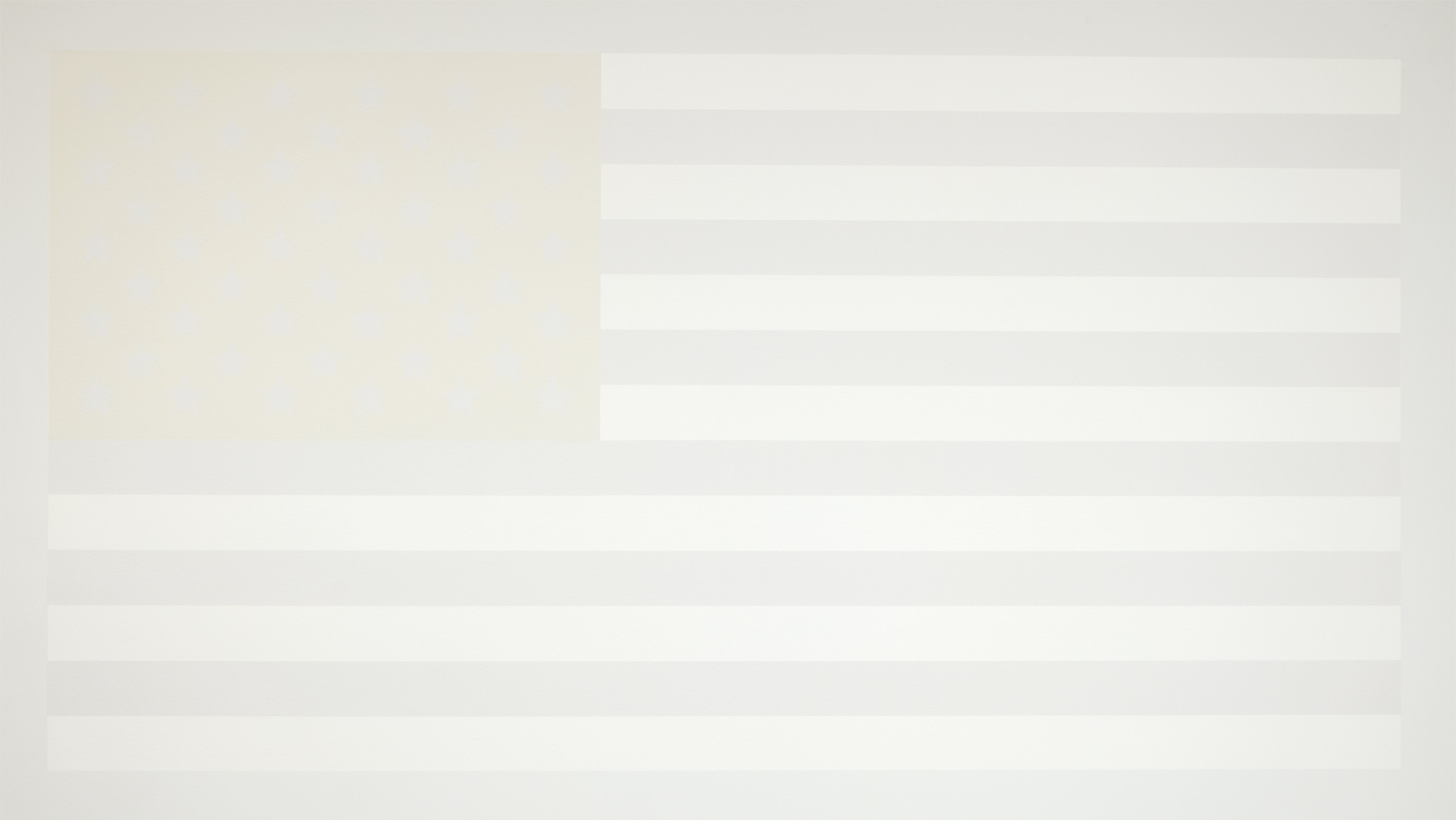

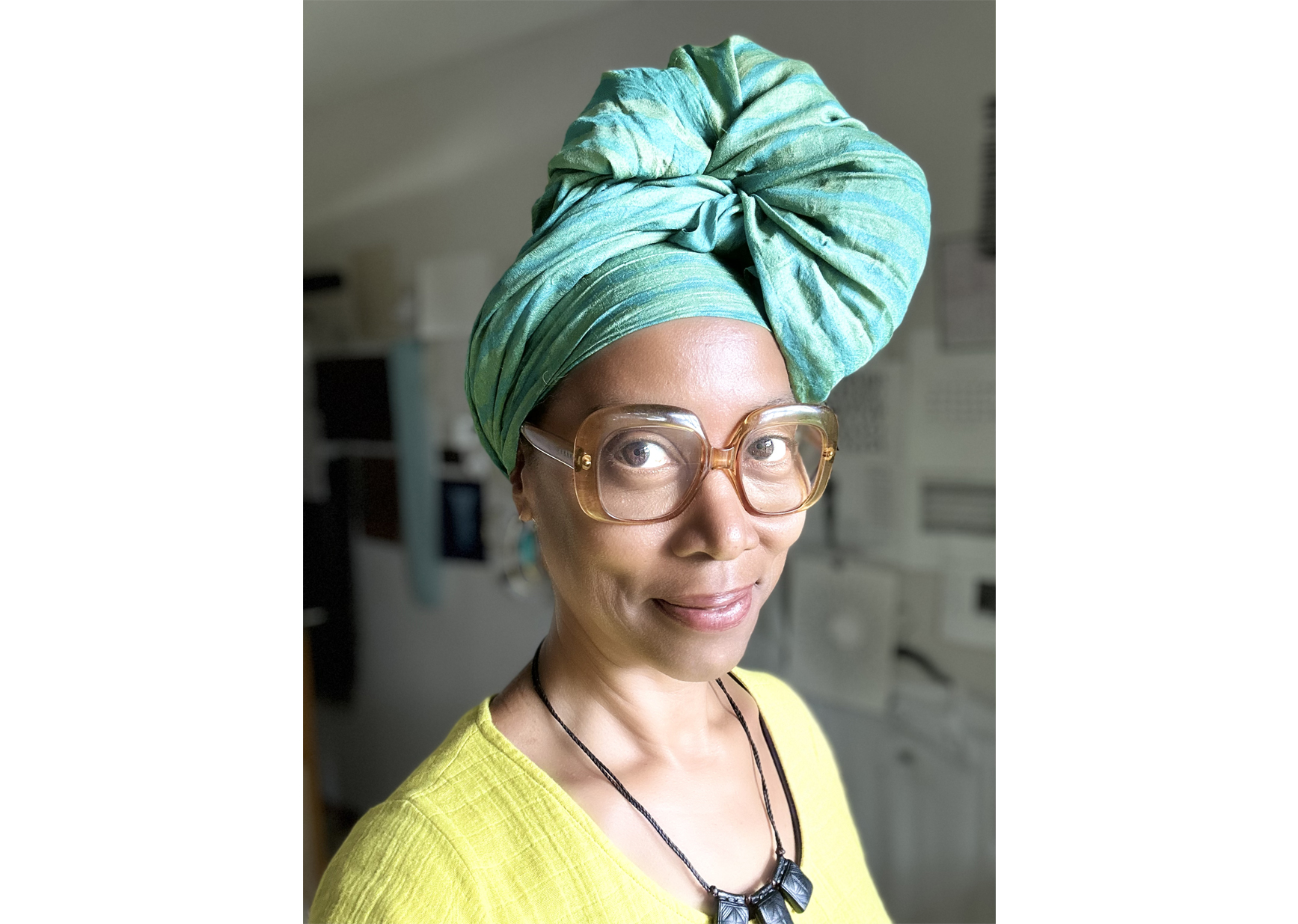
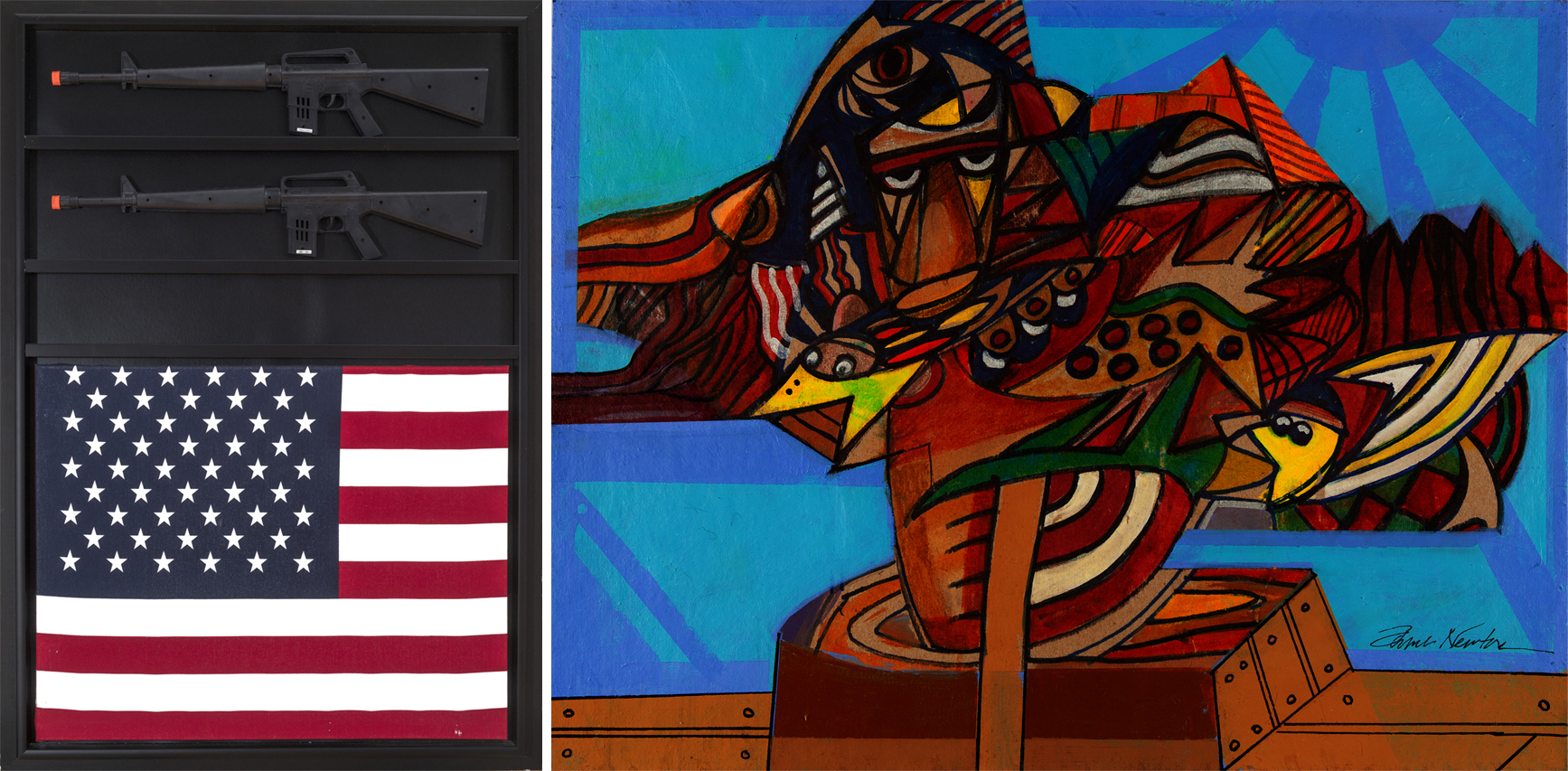 Left: American Sixties II, c. 1970. James E. Newton (1941–2022). Mixed media assemblage, 49 5/8 x 34 5/8 x 4 1/2 inches. Private Collection. © Estate of James E. Newton. Right: They Came Before Columbus VI, 2007. James E. Newton (1941–2022). Ink and acrylic on board, 12 × 16 inches. Private Collection. © Estate of James E. Newton.
Left: American Sixties II, c. 1970. James E. Newton (1941–2022). Mixed media assemblage, 49 5/8 x 34 5/8 x 4 1/2 inches. Private Collection. © Estate of James E. Newton. Right: They Came Before Columbus VI, 2007. James E. Newton (1941–2022). Ink and acrylic on board, 12 × 16 inches. Private Collection. © Estate of James E. Newton.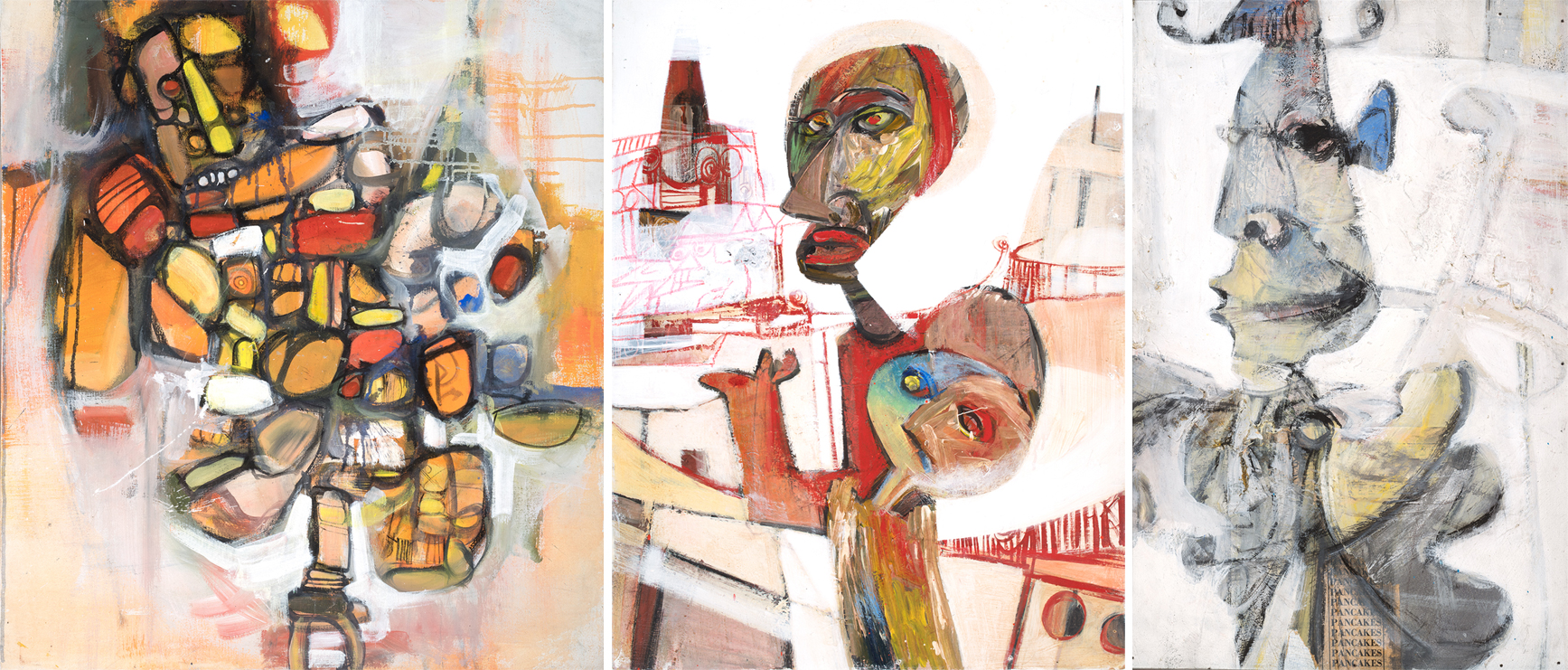 Left: Hunchback of Notre Dame, 1966. James E. Newton (1941–2022). Mixed media on canvas, 40 × 36 1/4 inches. Private Collection. © Estate of James E. Newton. Middle: Mausoleum of Lazarus, 1967. James E. Newton (1941–2022). Mixed media on board, 31 3/4 × 24 inches. Private Collection. © Estate of James E. Newton. Right: Don Quixote, 1966. James E. Newton (1941–2022). Mixed media on canvas, 23 × 15 inches. Private Collection. © Estate of James E. Newton.
Left: Hunchback of Notre Dame, 1966. James E. Newton (1941–2022). Mixed media on canvas, 40 × 36 1/4 inches. Private Collection. © Estate of James E. Newton. Middle: Mausoleum of Lazarus, 1967. James E. Newton (1941–2022). Mixed media on board, 31 3/4 × 24 inches. Private Collection. © Estate of James E. Newton. Right: Don Quixote, 1966. James E. Newton (1941–2022). Mixed media on canvas, 23 × 15 inches. Private Collection. © Estate of James E. Newton. 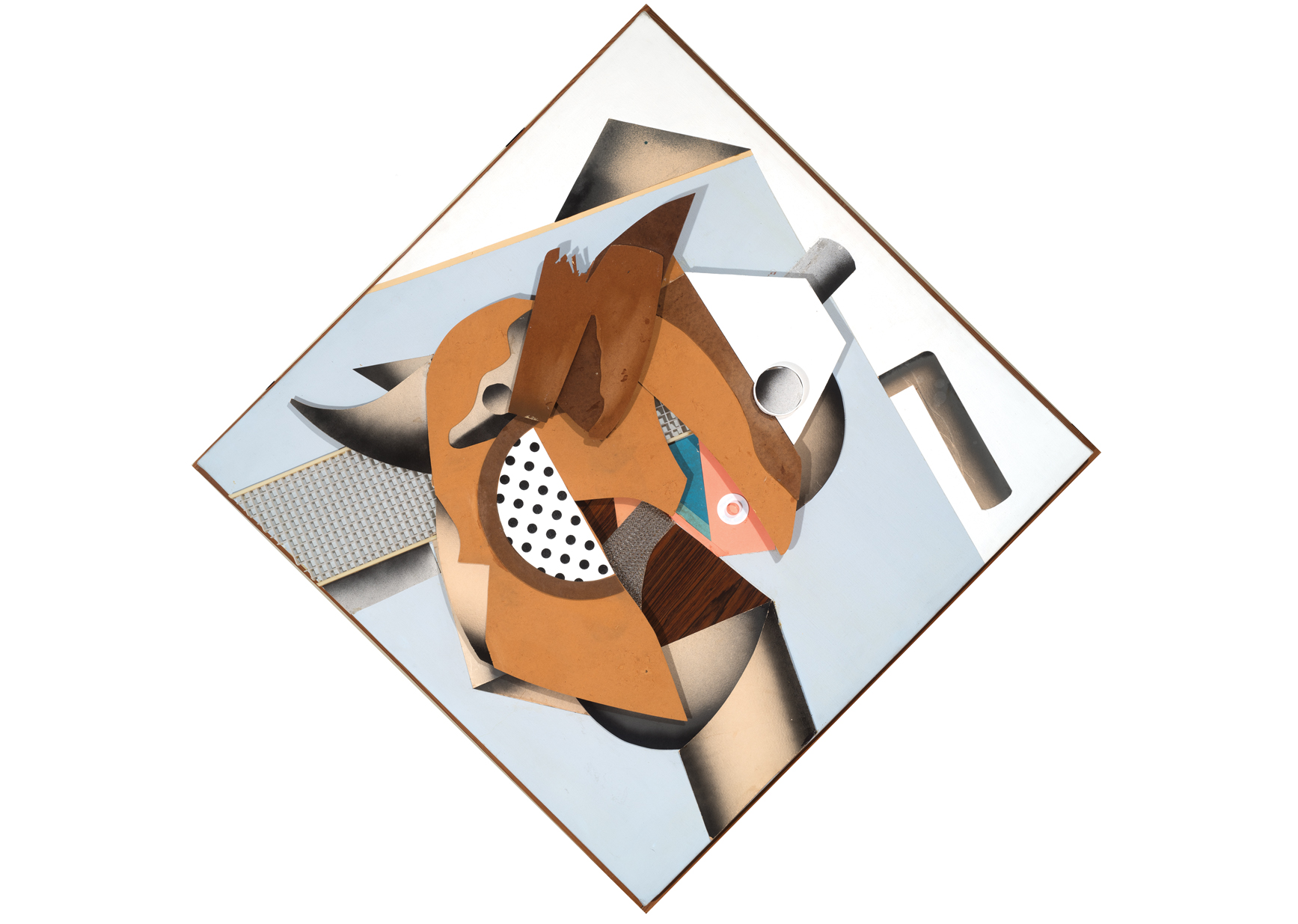 Piggly Wiggly, 1967. James E. Newton (1941–2022). Mixed media, 42 × 41 1/4 × 7 inches, support: 57 1/2 × 56 1/2 × 7 inches. Private Collection. © Estate of James E. Newton.
Piggly Wiggly, 1967. James E. Newton (1941–2022). Mixed media, 42 × 41 1/4 × 7 inches, support: 57 1/2 × 56 1/2 × 7 inches. Private Collection. © Estate of James E. Newton.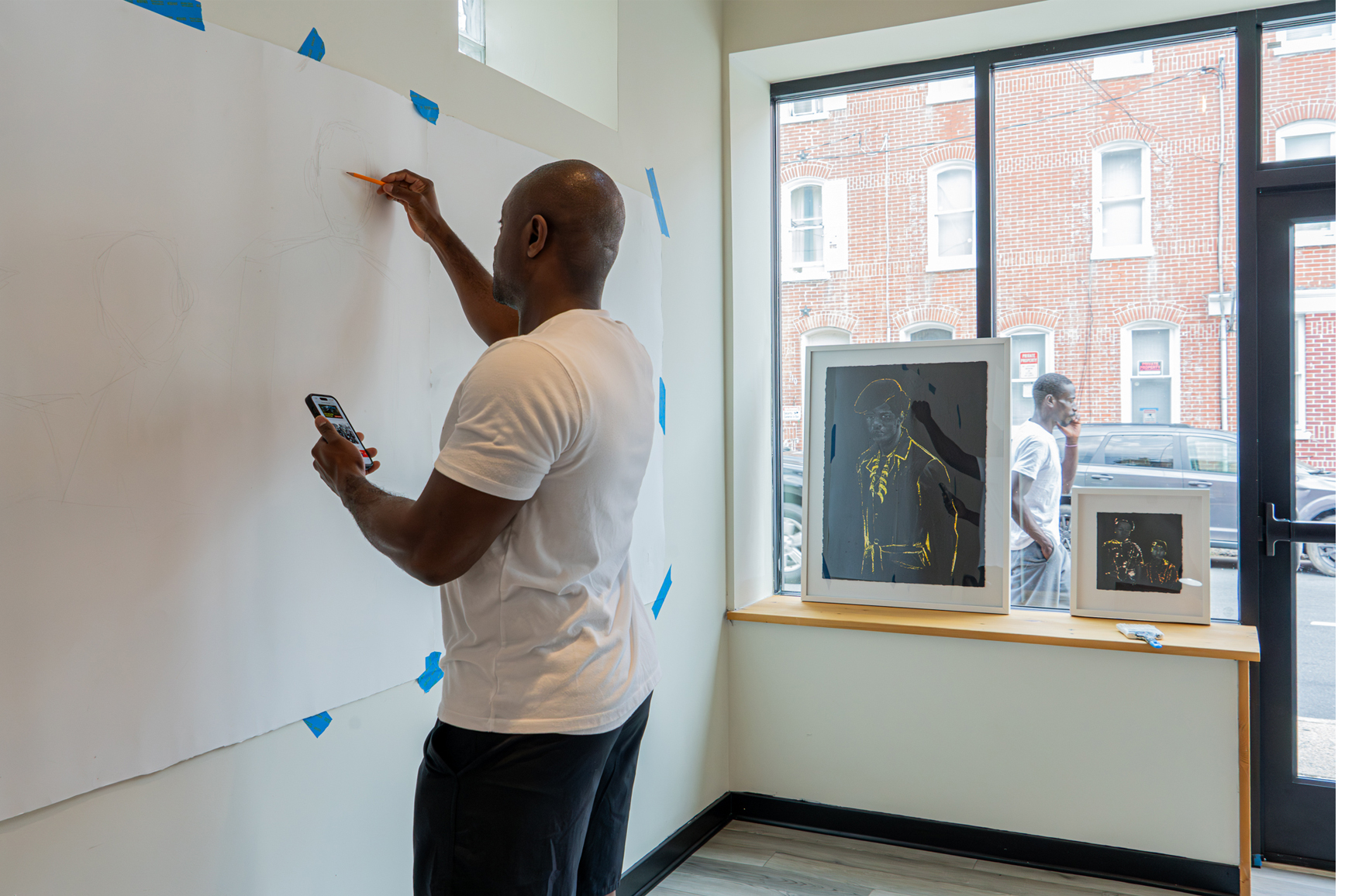
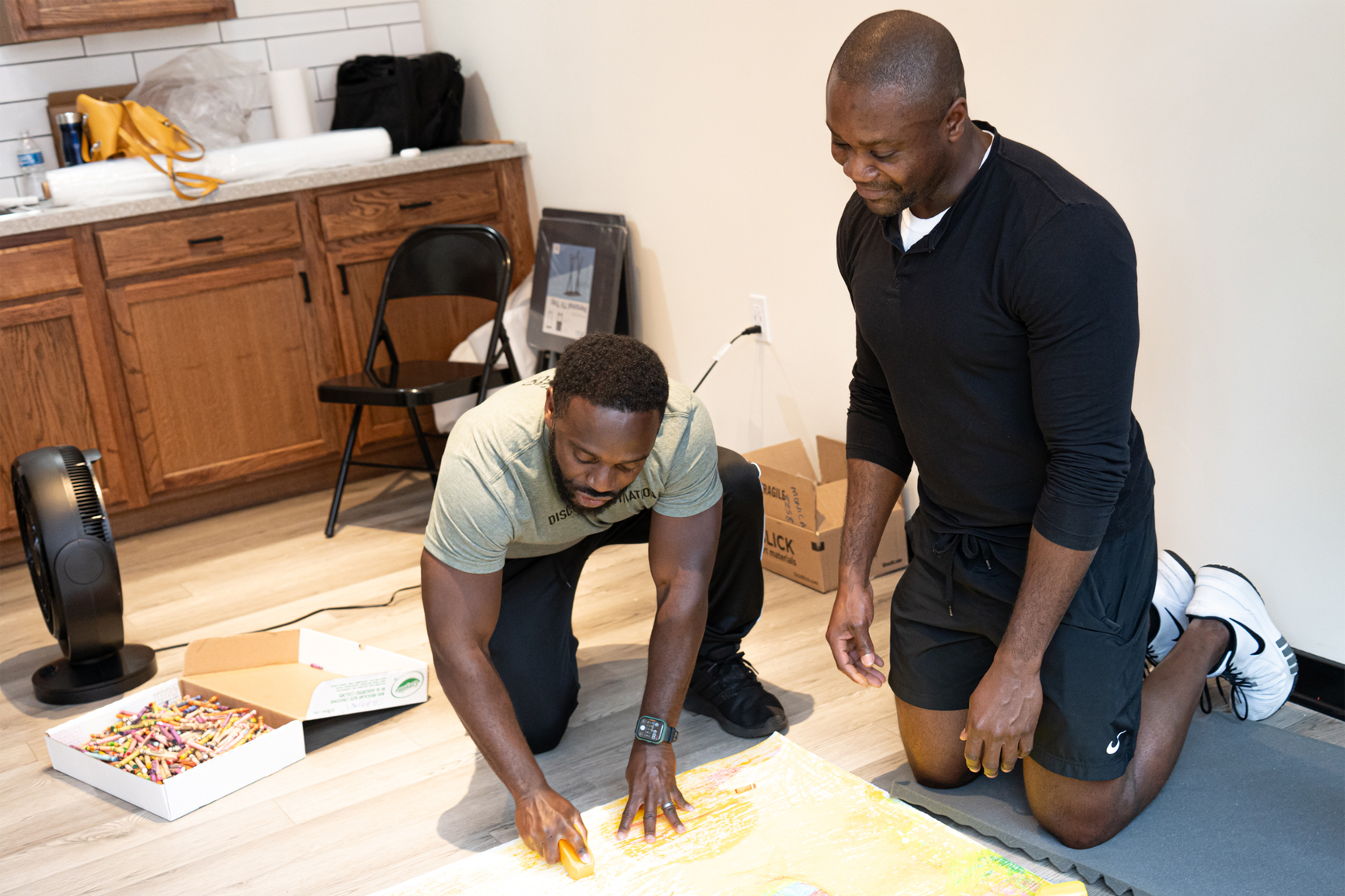
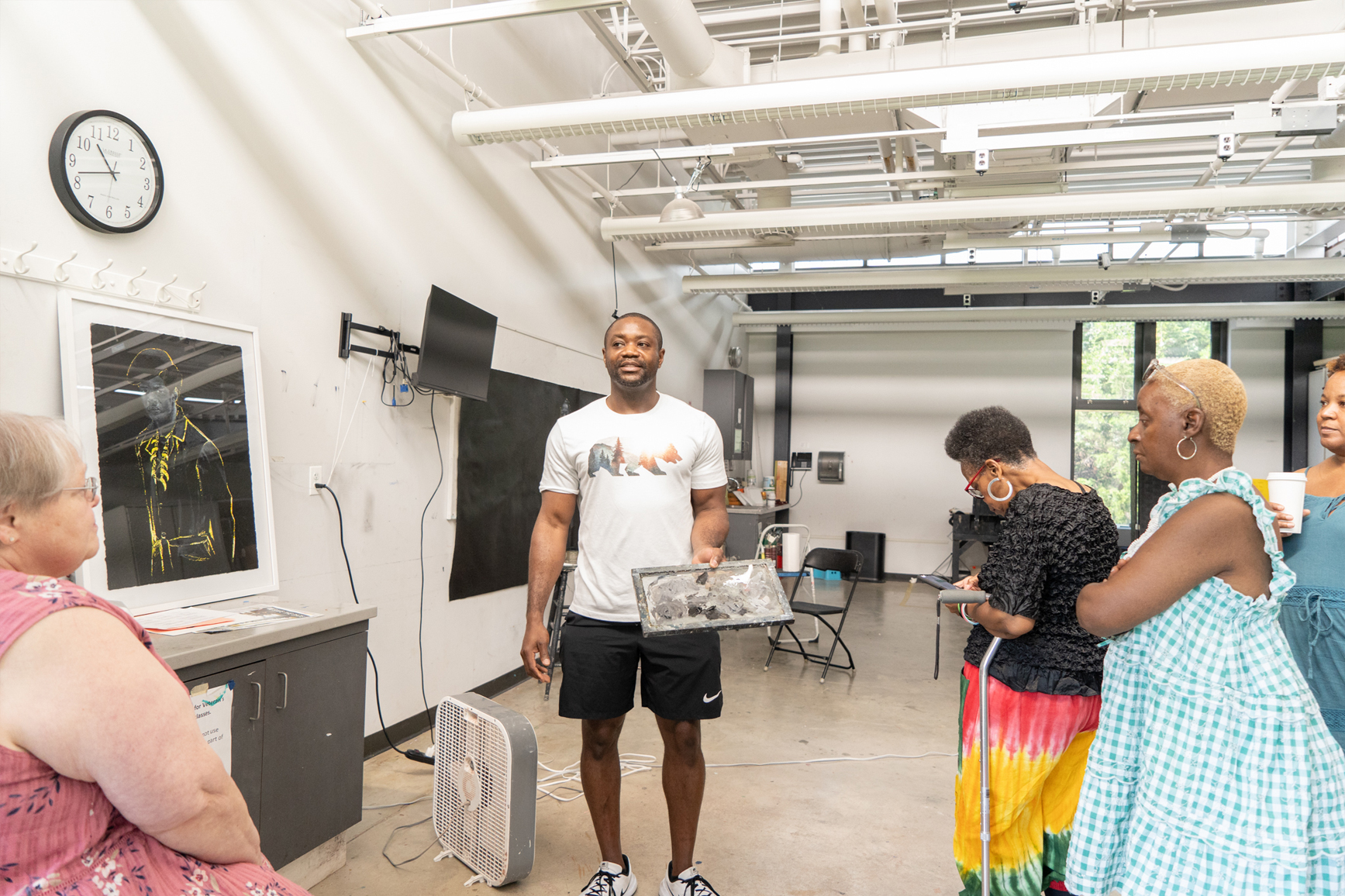
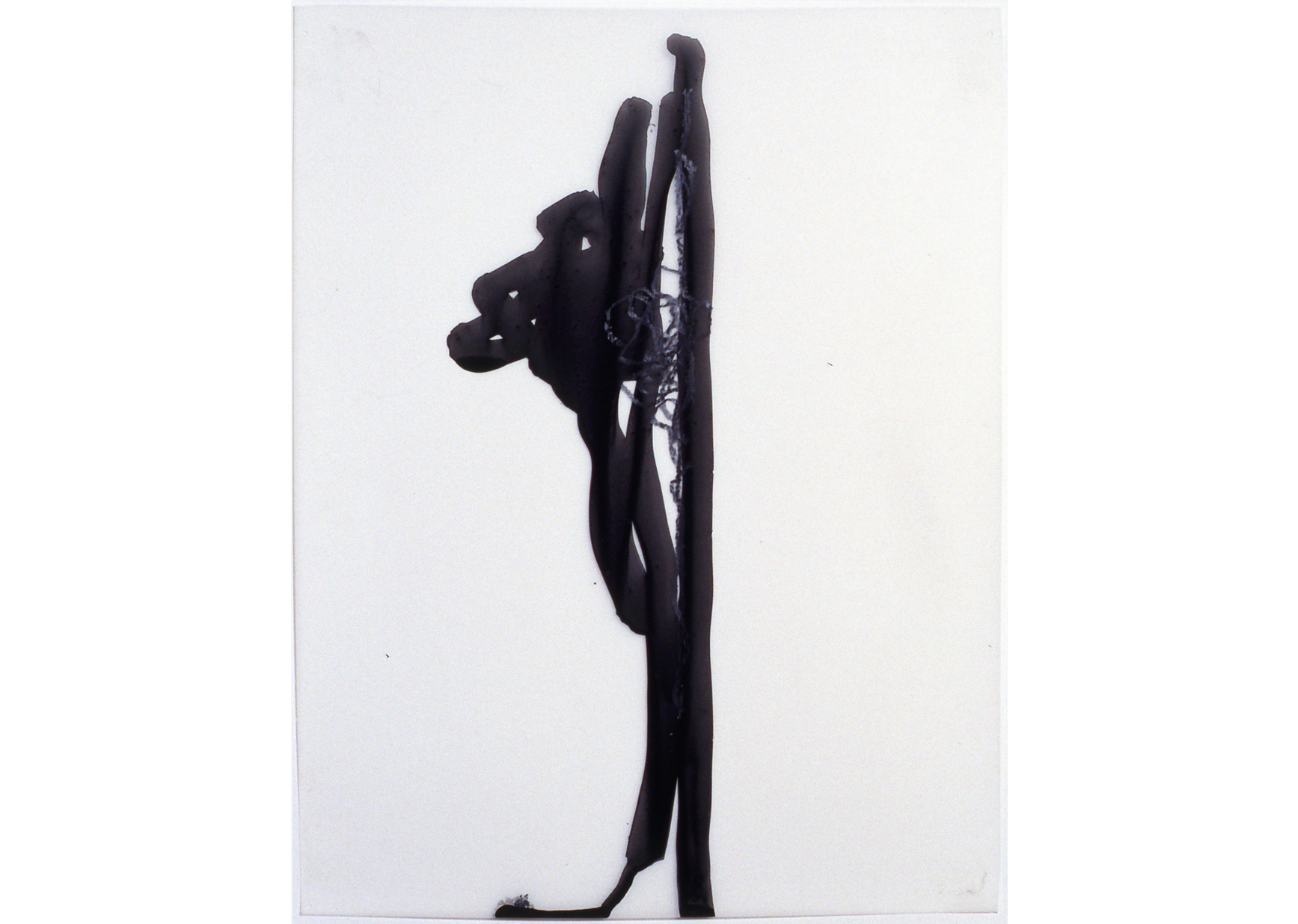 Tight, 1993. Sharon Louden (born 1964). Ink and graphite on double sided mylar, 11 × 8 1/2 inches. Delaware Art Museum, Gift of Sally and Wynn Kramarsky, 2009. © Sharon Louden.
Tight, 1993. Sharon Louden (born 1964). Ink and graphite on double sided mylar, 11 × 8 1/2 inches. Delaware Art Museum, Gift of Sally and Wynn Kramarsky, 2009. © Sharon Louden.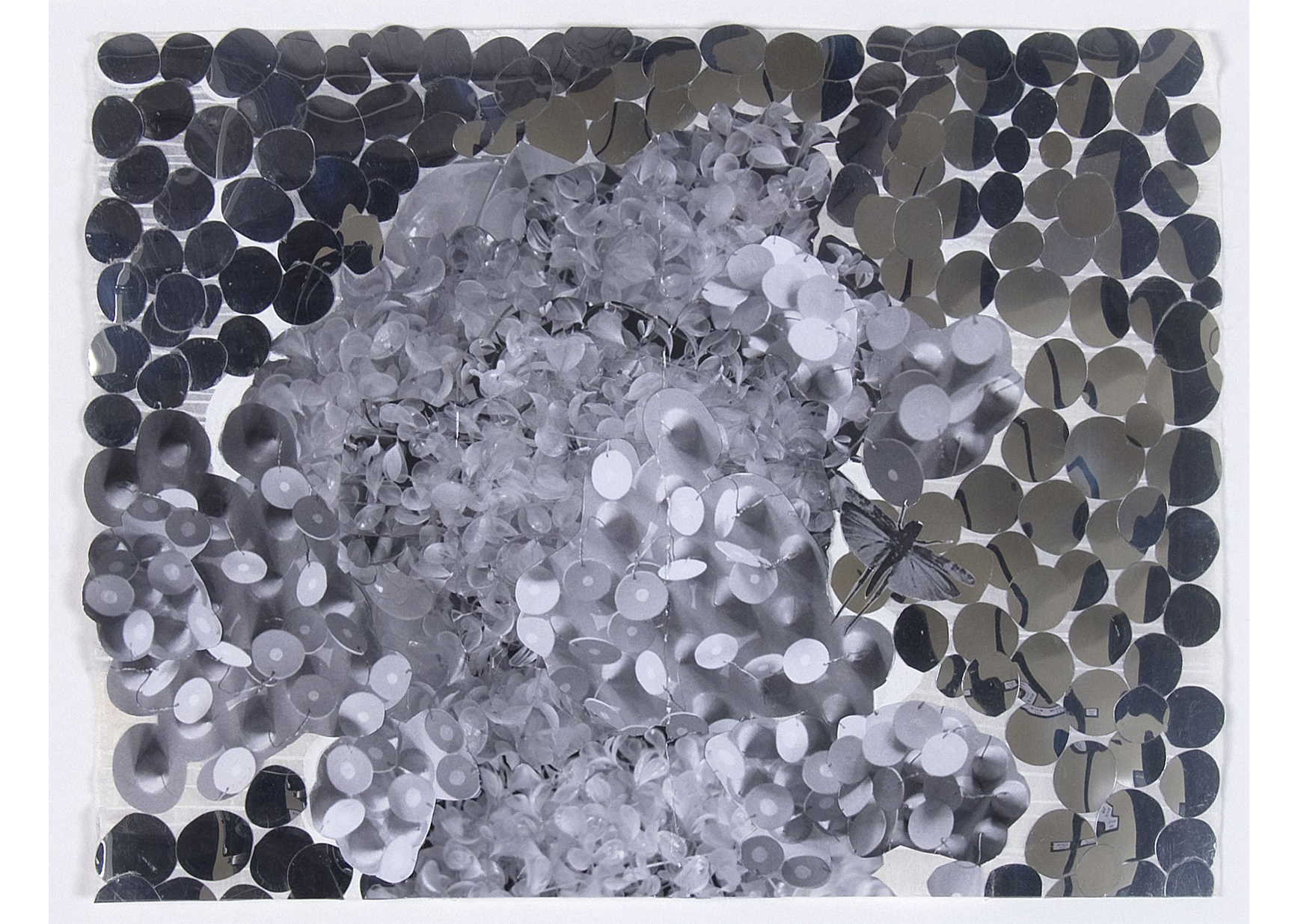 Untitled, 1998. Alyson Shotz (born 1964). Mixed media on paper, 9 × 12 inches. Delaware Art Museum, Gift of Sally and Wynn Kramarsky, 2009. © Alyson Shotz.
Untitled, 1998. Alyson Shotz (born 1964). Mixed media on paper, 9 × 12 inches. Delaware Art Museum, Gift of Sally and Wynn Kramarsky, 2009. © Alyson Shotz.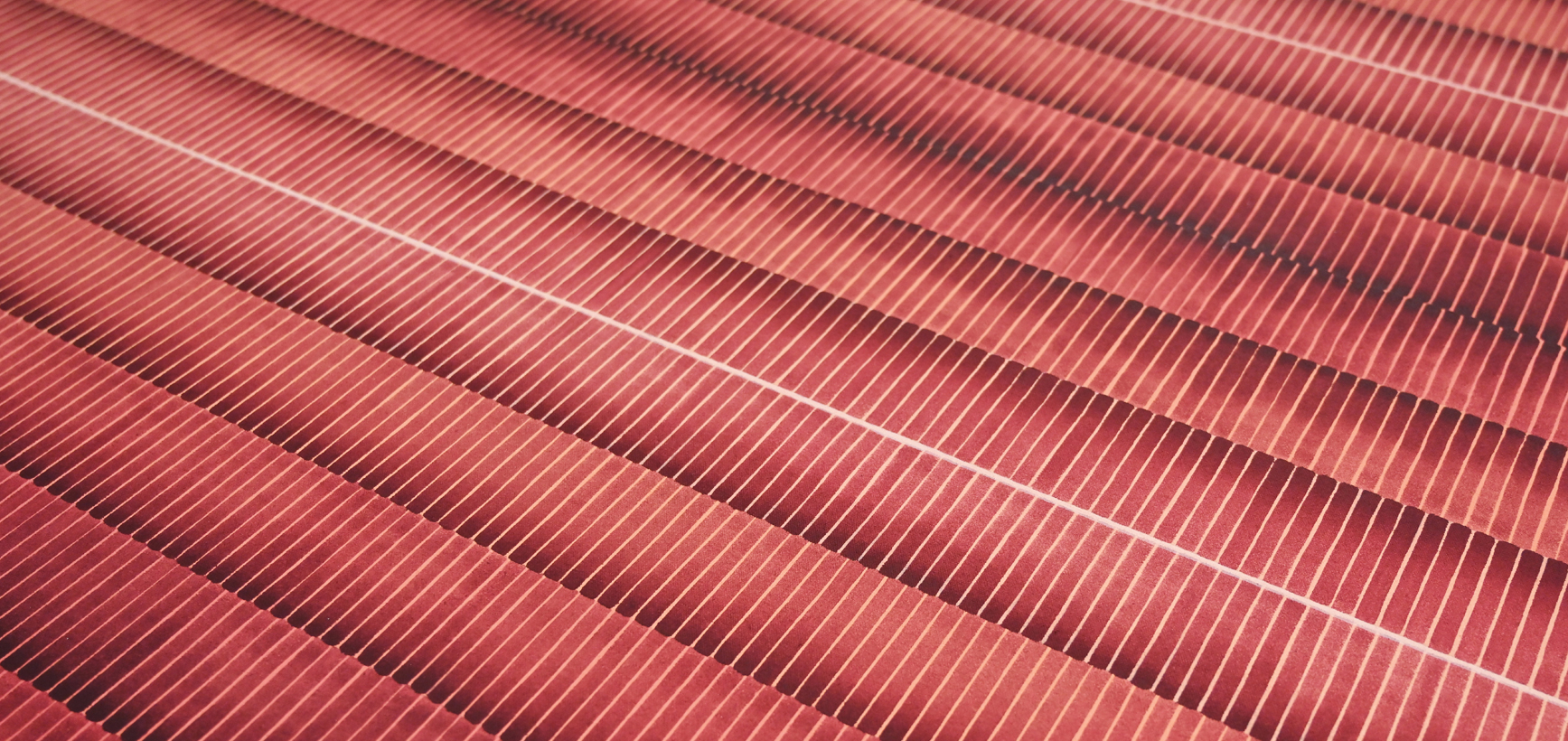 Mars Wanderings (detail)
Mars Wanderings (detail)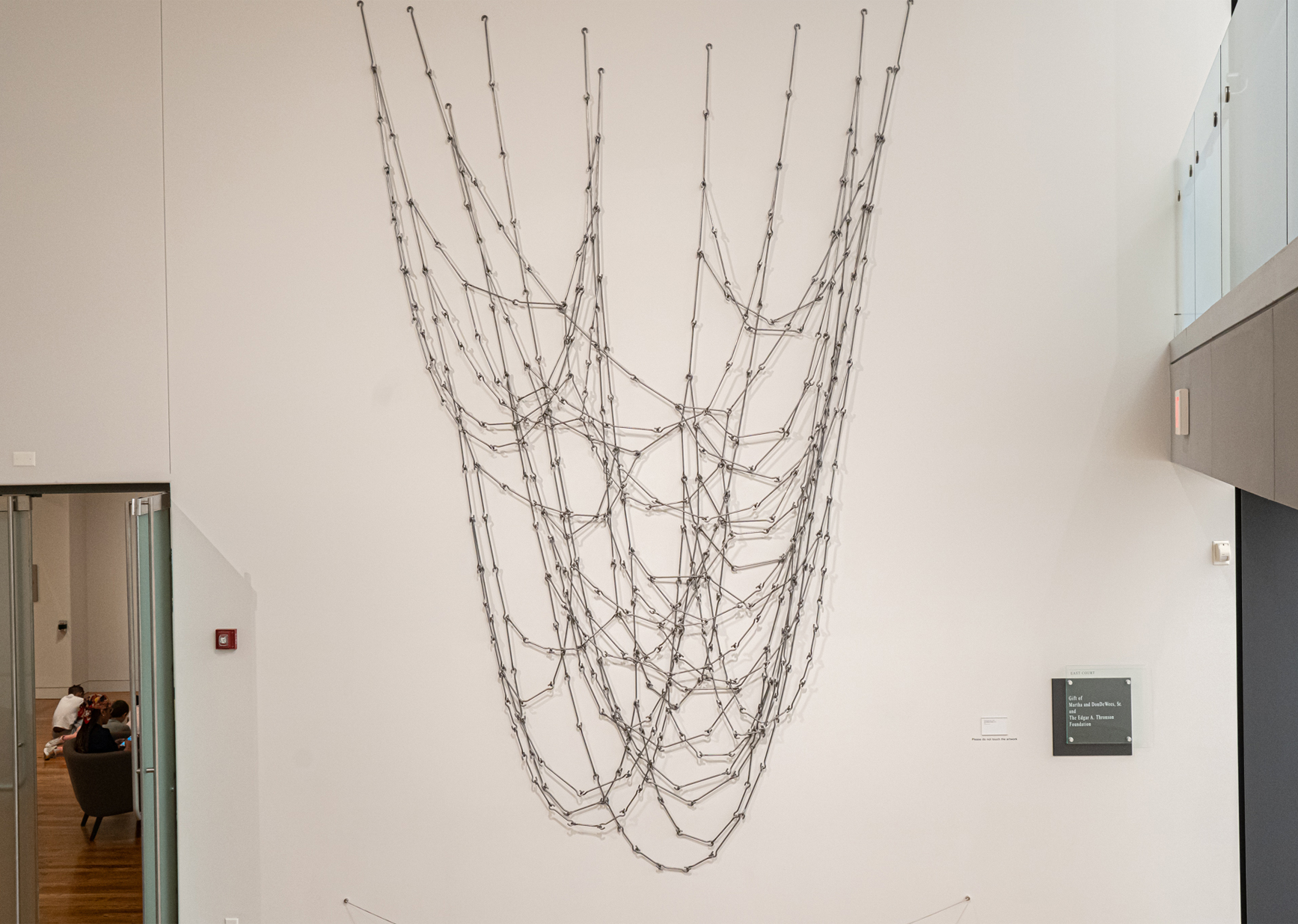 According to what, 2023. David Meyer (born 1963). Steel, variable dimensions. Courtesy of the artist. © David Meyer. Photo by Shannon Woodloe.
According to what, 2023. David Meyer (born 1963). Steel, variable dimensions. Courtesy of the artist. © David Meyer. Photo by Shannon Woodloe.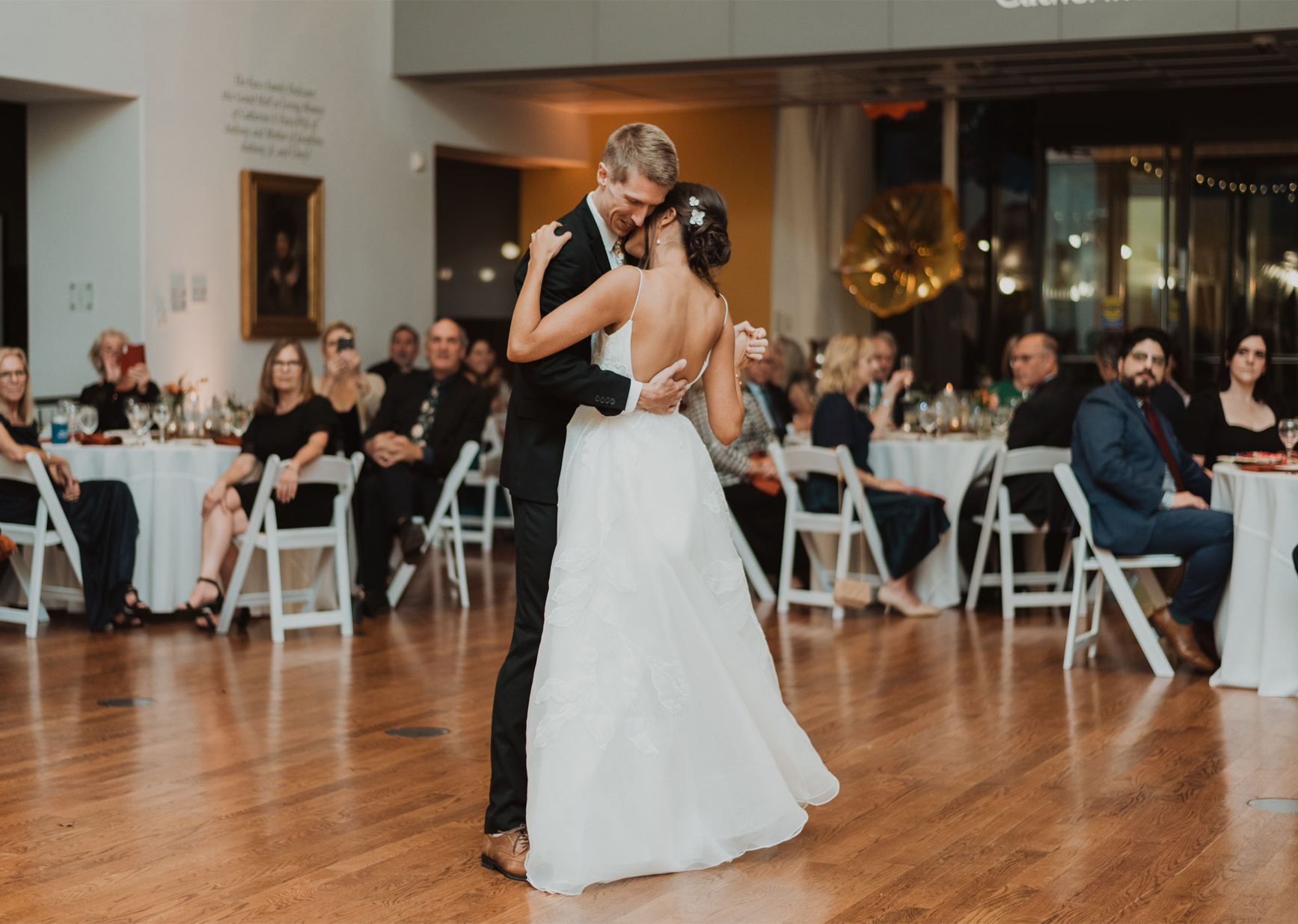 Laura Briggs Photography.
Laura Briggs Photography. Meghan Newberry Photography. Sculpture:
Meghan Newberry Photography. Sculpture:  CCF CETA artist Selvin Goldbourne drawing portraits at a Harlem block party; Photo by Blaise Tobia for the CCF CETA Arts Project,1978. © Blaise Tobia, 2023.
CCF CETA artist Selvin Goldbourne drawing portraits at a Harlem block party; Photo by Blaise Tobia for the CCF CETA Arts Project,1978. © Blaise Tobia, 2023.
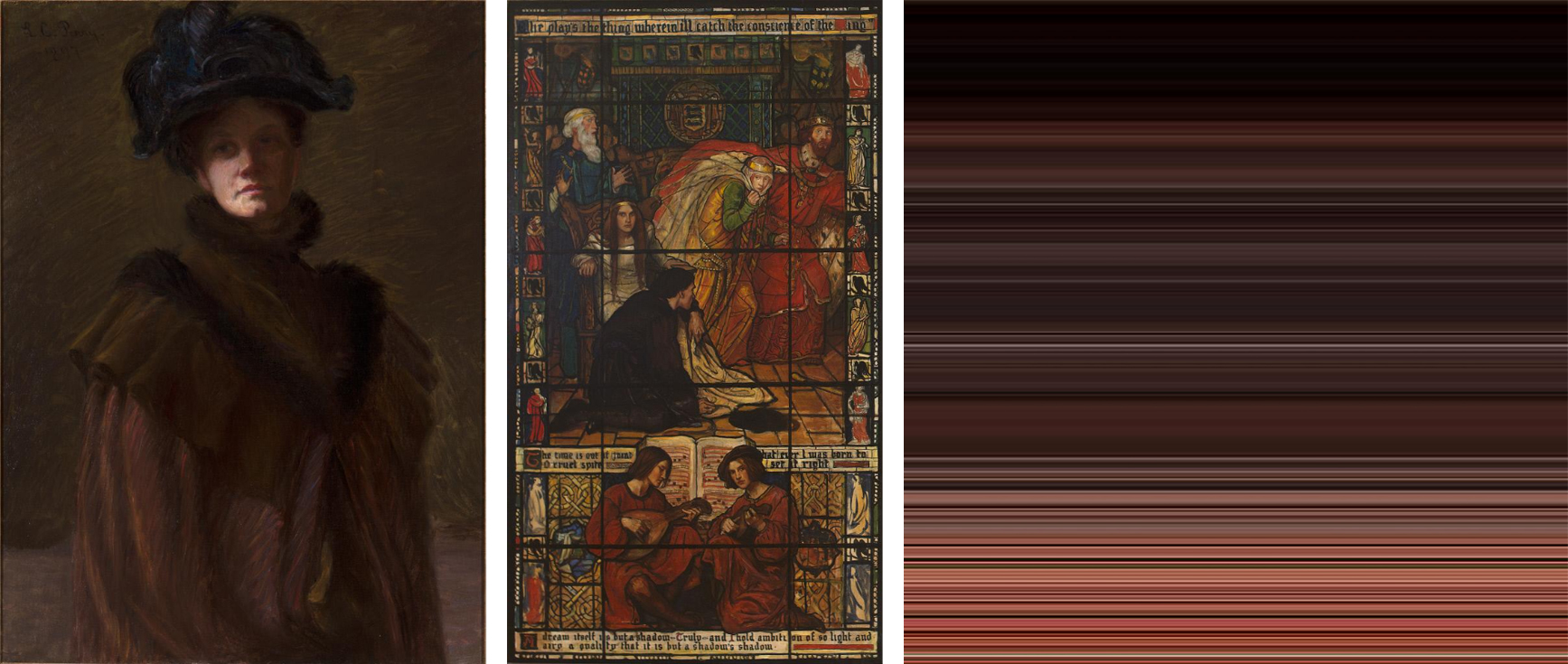
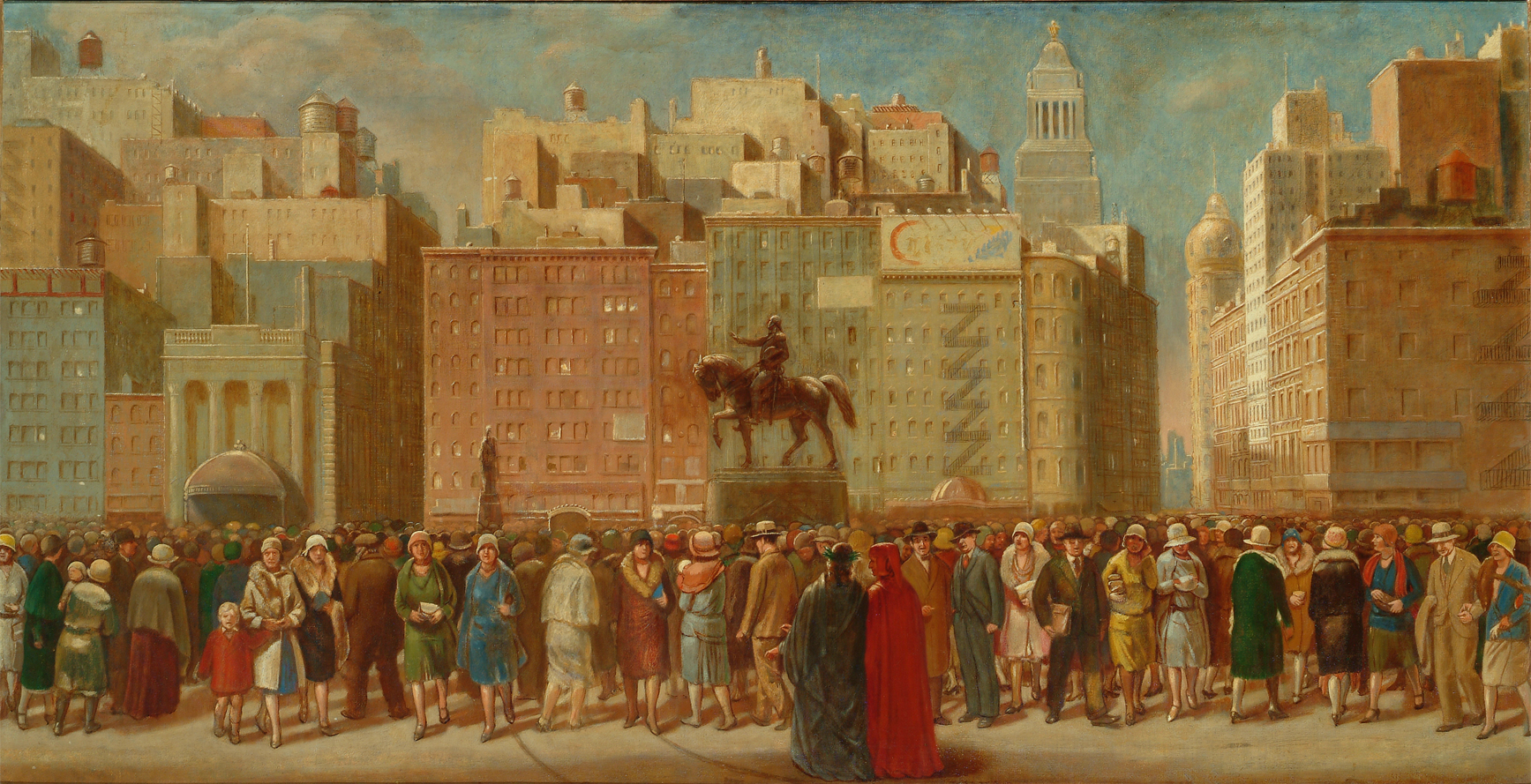
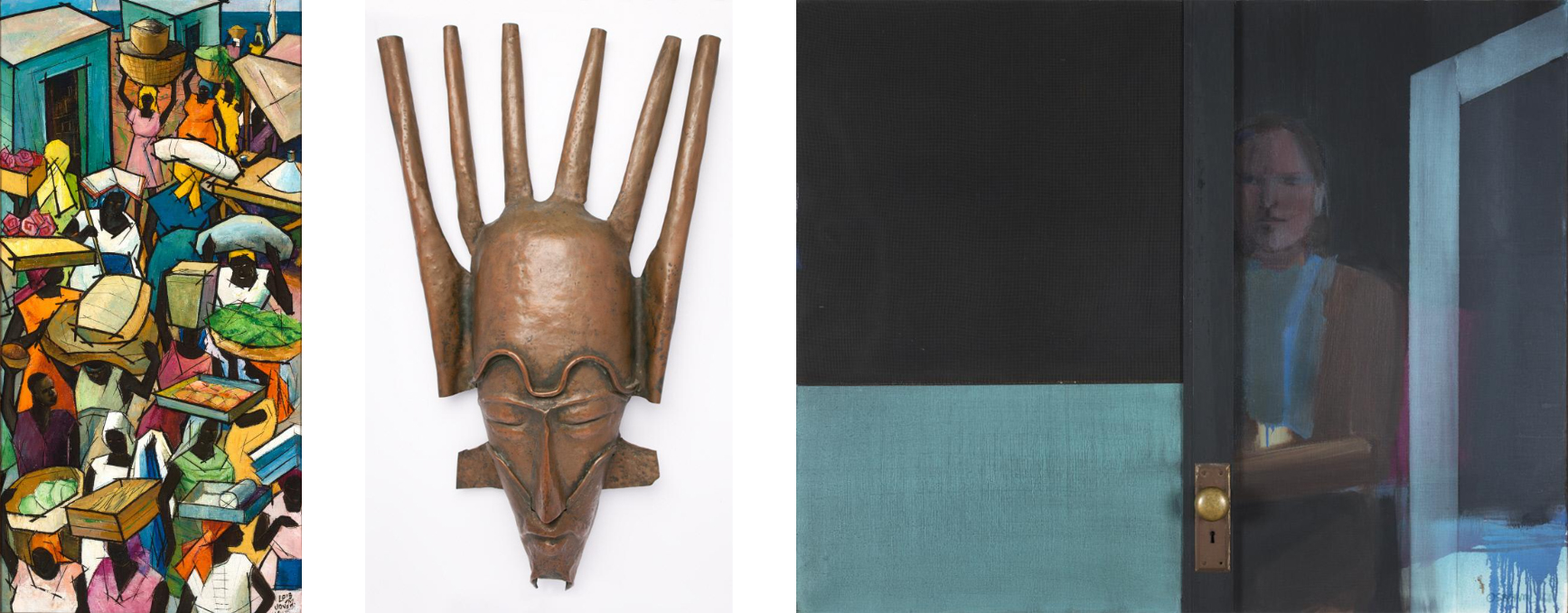
 Kaleidoscope Cove was designed by the Volta Family in 2016.
Kaleidoscope Cove was designed by the Volta Family in 2016.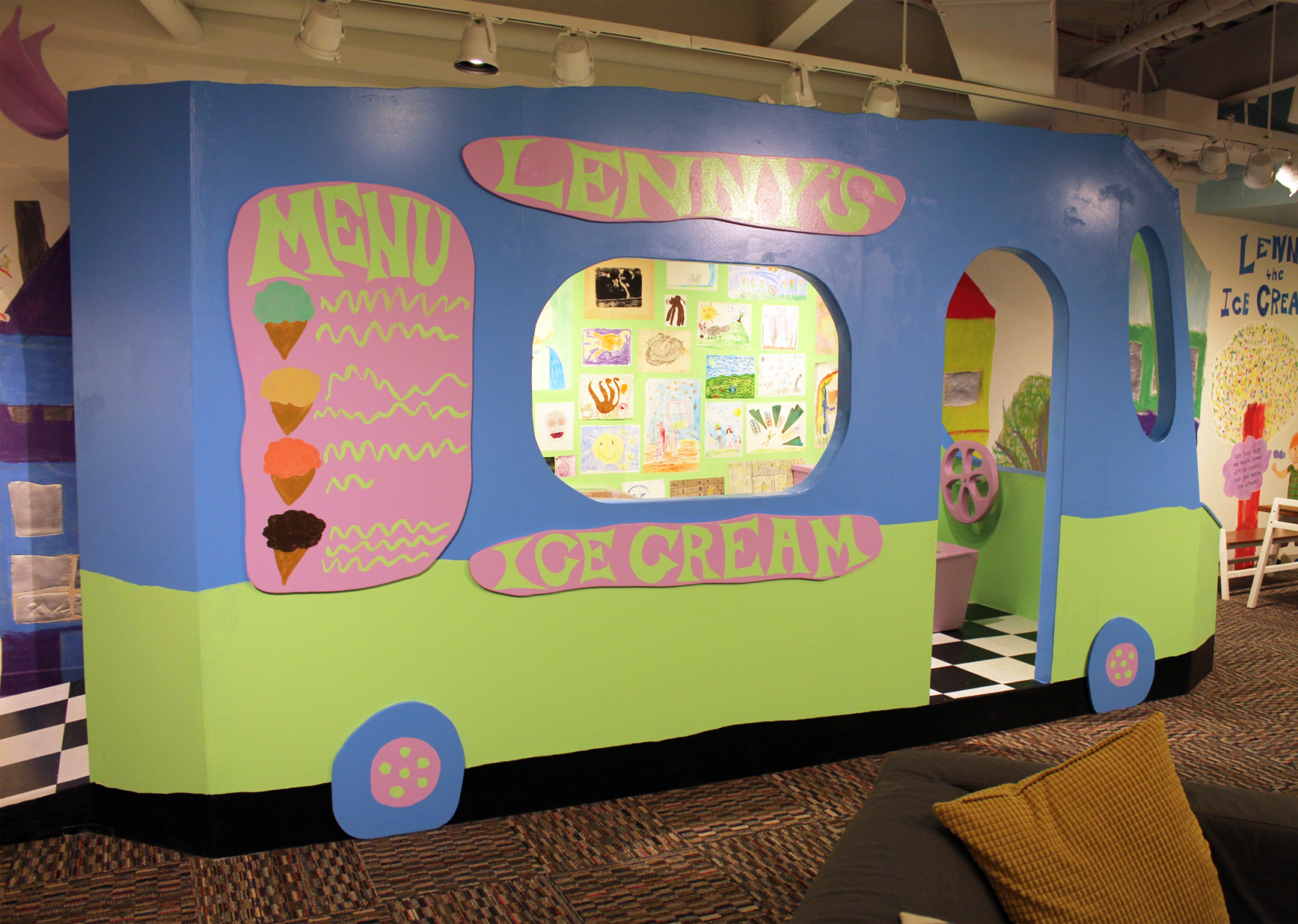 Lenny the Ice Cream Man was dreamed up by the Smith Family in 2017.
Lenny the Ice Cream Man was dreamed up by the Smith Family in 2017.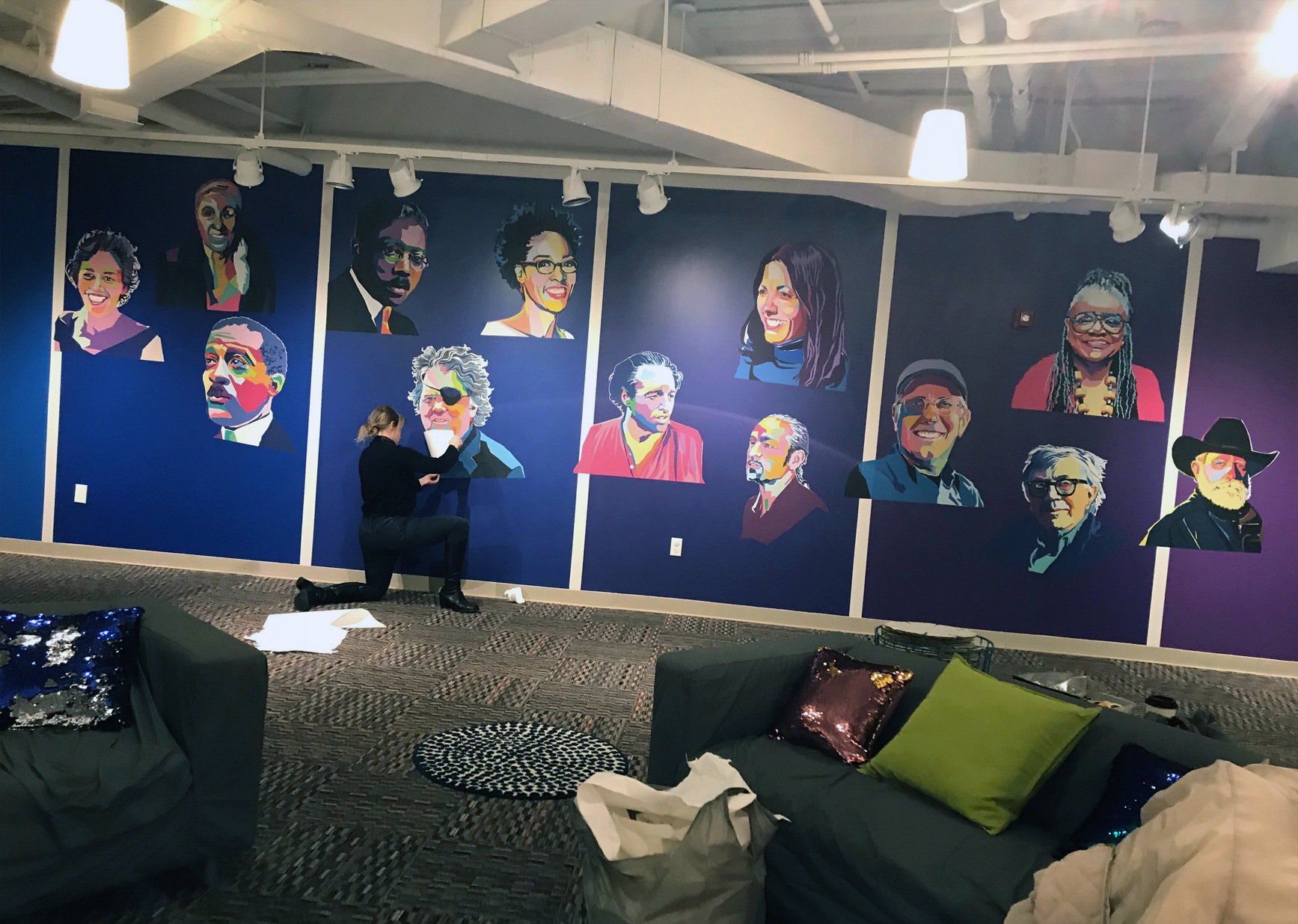 Creative Power was the work of the Silverman Family in 2018.
Creative Power was the work of the Silverman Family in 2018. 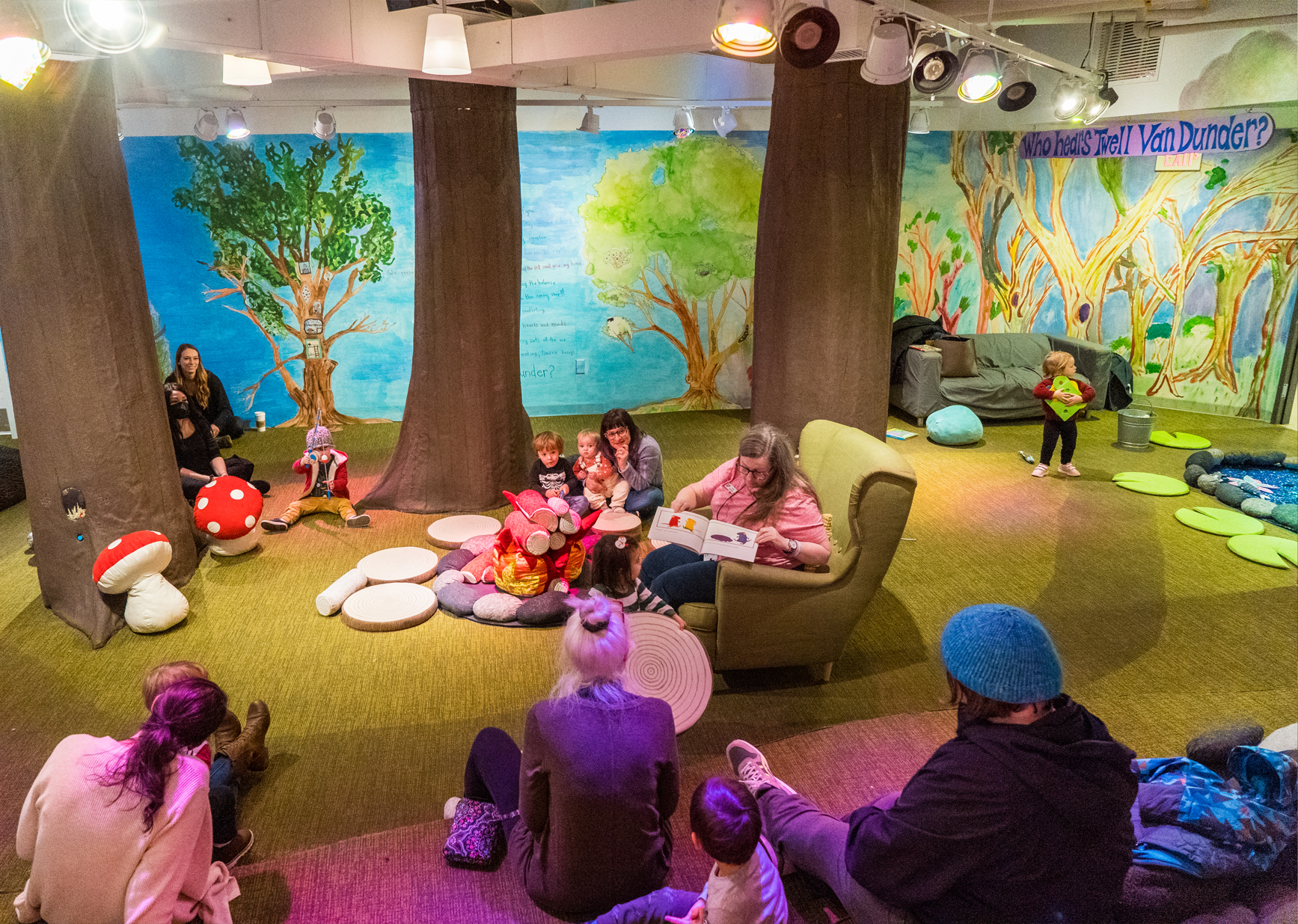
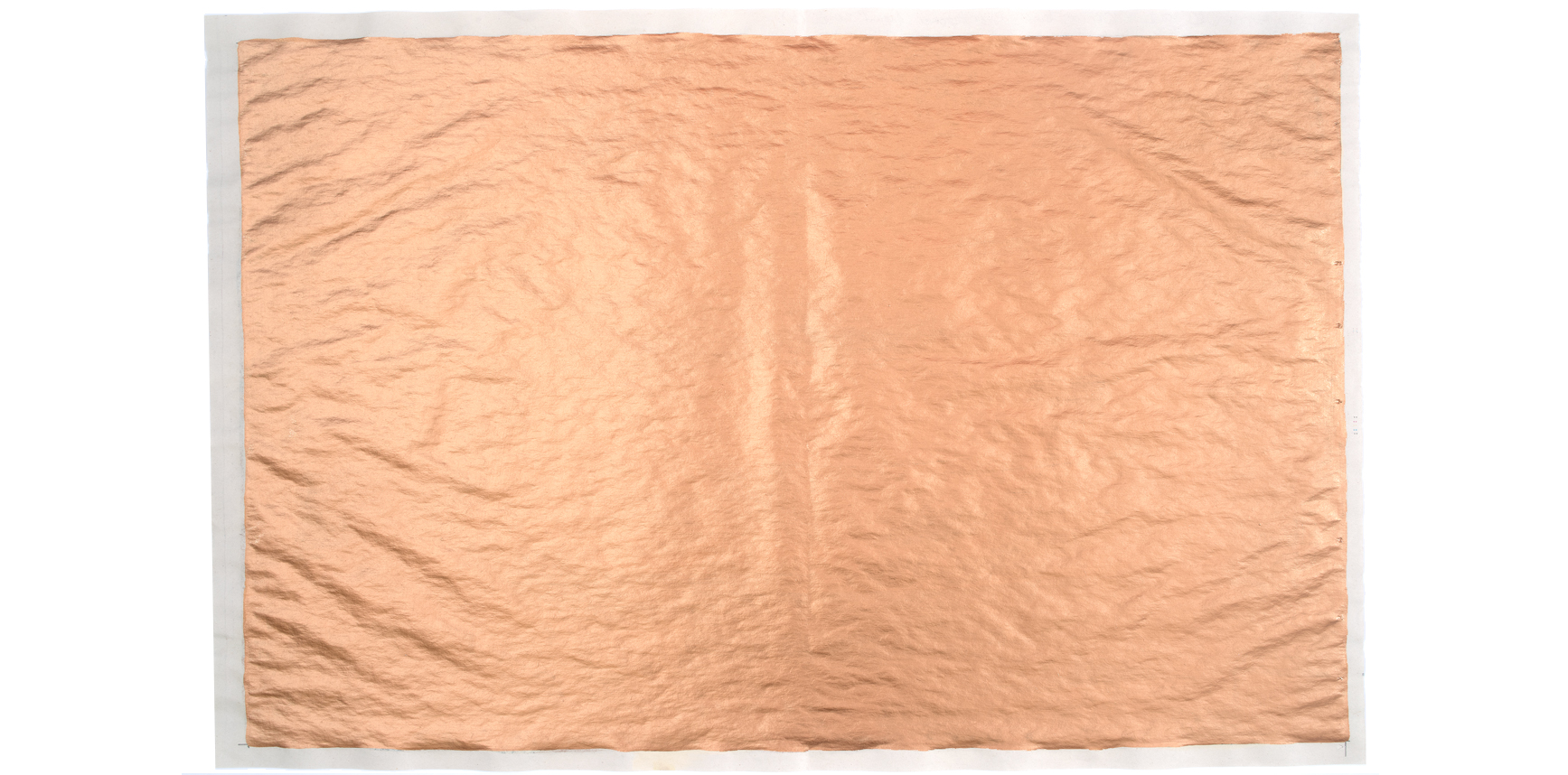 Glorious Truth (part 2) River Reporter, August 2022 (2), 2022. Anna Bogatin Ott (born 1970). Metallic paint on newspaper, 12 13/16 × 19 7/8 inches. sheet: 13 5/8 × 20 7/8 in. (34.6 × 53 cm). Courtesy of the artist. © Anna Bogatin Ott.
Glorious Truth (part 2) River Reporter, August 2022 (2), 2022. Anna Bogatin Ott (born 1970). Metallic paint on newspaper, 12 13/16 × 19 7/8 inches. sheet: 13 5/8 × 20 7/8 in. (34.6 × 53 cm). Courtesy of the artist. © Anna Bogatin Ott. Left to right: Moon_1L21, 2019 – 2022. Anna Bogatin Ott (born 1970). Archival pigment print on aluminum, 12 × 12 inches. Courtesy of the artist. © Anna Bogatin Ott. Mars_15L2B, 2021 – 2022. Anna Bogatin Ott
Left to right: Moon_1L21, 2019 – 2022. Anna Bogatin Ott (born 1970). Archival pigment print on aluminum, 12 × 12 inches. Courtesy of the artist. © Anna Bogatin Ott. Mars_15L2B, 2021 – 2022. Anna Bogatin Ott